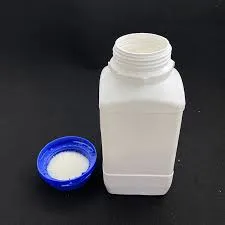Chemicals Used to Treat Drinking Water
Ensuring safe drinking water is a critical public health priority. To achieve this, various chemicals are employed in the water treatment process, each serving specific purposes to purify water, remove contaminants, and enhance its safety for human consumption.
One of the primary chemicals used in water treatment is chlorine. Chlorine is an effective disinfectant that eliminates bacteria, viruses, and other pathogens that can cause waterborne illnesses. It is usually added during the disinfection stage of treatment and can also form chloramines, which help maintain a residual disinfectant level in the distribution system, providing continued protection against microbial contamination.
Another essential chemical is coagulant agents, such as aluminum sulfate (alum) and ferric chloride. These compounds help to aggregate suspended particles in the water, allowing them to be removed more easily during sedimentation. The process of coagulation and flocculation significantly improves water clarity and reduces turbidity, making the water safer and more visually appealing.
Additionally, activated carbon is often used to remove organic compounds, taste, and odor from drinking water. It acts through a process of adsorption, where contaminants adhere to the surface of the activated carbon particles. This process is particularly valuable in treating water that has been affected by agricultural runoff or industrial pollution.
what chemicals are used to treat drinking water

Fluoride is another chemical that is commonly added to drinking water. While its primary purpose is to prevent tooth decay, the addition of fluoride is a topic of debate in many communities. Public health officials advocate for its use based on numerous studies demonstrating its benefits, though concerns regarding excessive exposure and potential health risks have led to widespread discussion.
Ozone is a powerful oxidant that, like chlorine, is used for disinfection. It can destroy bacteria and viruses more effectively than chlorine, and its byproducts do not carry the same health risks. However, the generation and application of ozone require careful handling due to its reactive nature.
Lastly, pH adjustment chemicals, such as lime or sodium hydroxide, are used to control the acidity of the water. Maintaining proper pH levels is crucial not only for optimal disinfection but also for preventing pipe corrosion and helping to ensure the stability of the water distribution system.
In conclusion, the treatment of drinking water relies on a carefully coordinated use of various chemicals designed to eliminate harmful contaminants and ensure water safety. The ongoing evolution of water treatment technologies continues to enhance the effectiveness and efficiency of these processes, ultimately contributing to public health and well-being.

